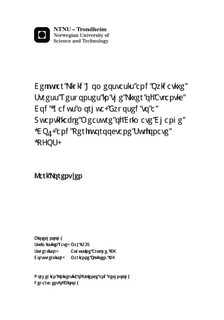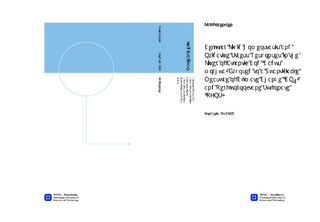| dc.description.abstract | Increase in atmospheric carbon dioxide (CO2) is generally regarded as the main cause of global climate change, and this condition has also been shown in aquatic environments. In addition, emerging contaminants are ubiquitously distributed in the aquatic environment, and interactions between CO2 and emerging pollutants in biological systems are inevitable. The aim of this master thesis was to elucidate the combined effect of the environmental contaminant perfluorooctane sulfonate (PFOS) and increased water CO2 concentration on oxidative stress response and lipid homeostasis in liver of juvenile Atlantic cod (Gadus morhua). Juvenile Atlantic cod were exposed for one hour daily to 0, 100, or 200 μg PFOS/L for a total of 5 days, and thereafter, transferred to tanks with different increases in CO2 levels (normal, 0.3 %, and 0.9 %). Tissue samples were collected at 3, 6, and 9 days after initiated CO2 exposure. Real-time RT-PCR was used to analyse expression of various genes involved in lipid homeostasis and oxidative stress response. The activities of selected antioxidant enzymes, and also total Glutathione and Malondialdehyde, were measured spectrophotometrically. At day 3, exposure to elevated CO2 increased expression of glutathione peroxidase 1 (gpx1), with PFOS having a small potentiating effect. Oxidative stress was likely a direct consequence of increased CO2 level, either caused by formation of reactive oxygen and nitrogen species from nitrosoperoxycarboxylate, or by pH-dependent increase of Fenton reaction. At day 6 and 9, increased CO2 caused an increased expression of peroxisome proliferator-activated receptor β (pparβ). A following increase in fatty acid β-oxidation and subsequent generation of hydrogen peroxide (H2O2) and superoxide anion (·O2-) was probably the mechanism behind increased expression and activity of several antioxidant enzymes. At day 9, a 0.9 % elevation in CO2 level caused increased Glutathione S-transferase (GST) activity. This might be due to increased need for clearance of molecules damaged by oxidative attack, which indicates that antioxidant defence system of the cell was overwhelmed. Overall, this suggests that exposure to increased CO2 levels can induce oxidative stress in liver of Atlantic cod, and that the emerging contaminant PFOS can potentiate this effect. This might have consequences for overall fitness and survival of organisms. | nb_NO |

